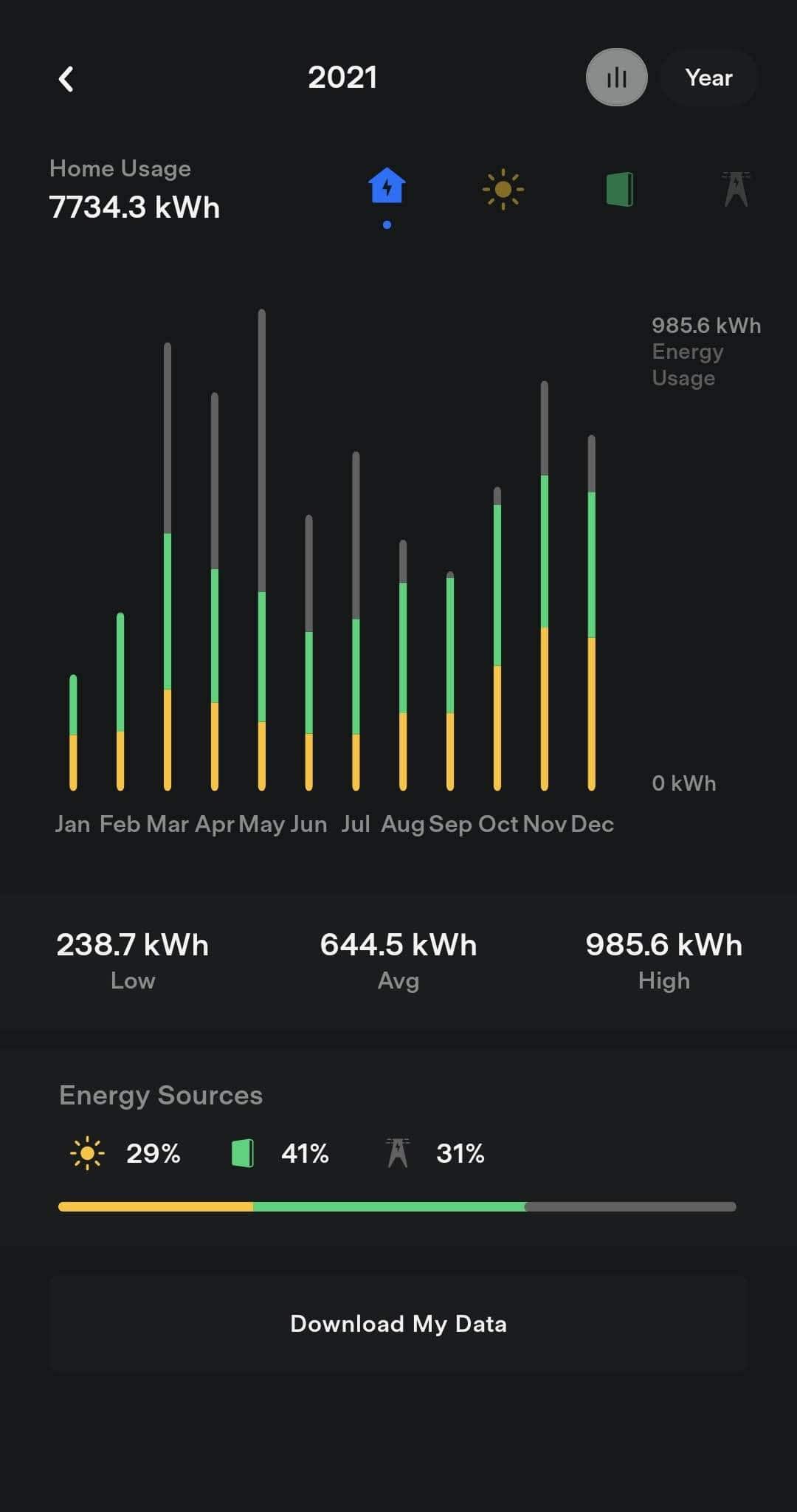

During the lockdown days in 2020, I got A Tesla Powerwall 2 + Backup Gateway 2 combo installed by Natural Solar. The total cost was A$14,000. “Is it worth buying?” or “Would it pay for itself?” those were the question I got asked a lot. With a full year’s data from 2021, I think I can answer the questions now.
Whether it’s worth to have a home battery like Tesla Powerwall2, depending how you look at it.
As an investment
No it won’t pay for itself soon enough. Why? Let’s do the math here. Assuming power price and solar feed-in price won’t change for coming years, given Powerwall supplied 7734kwh x 0.41 = 3170kwh, I would have paid A$824 for those kwhs at peak hour price(mine is A$0.26/kwh).
The power used to charge the Powerwall comes from solar panels, so without Powerwall those kwhs would have earned me A$212 from feed-in(mine is A$0.067/kwh).
So the Powerwall saved me effectively A$612 a year, it will take 22 years to get my 14k ‘investment’ back. Not good enough.
Although, if power price goes up and feed-in price goes down(already happening?) in coming years, it will take less years to return the investment. Also it will be nice to have government rebate on the battery, I didn’t qualify as I claimed the rebate for solar panels years earlier.
As a way to be more self-sufficient
Totally worth it!
With Backup Gateway, The Powerwall becomes a huge UPS for my whole household and I’ve tested myself the switch is fast enough and devices such as broadband router and computers hosting this blog won’t notice a thing when grid was out. There was a dozen of quick blackouts in the year, to my surprise. Since I’m working from home a lot, I think having a backup power source does improve my availability at work.
As the picture says, the Powerwall supplied 41% of energy during the year. This is a big deal because my household is now 69% on renewable energy and it would be down to 28% without the Powerwall. Comparing to the AEMO’s Fuel Mix data, Australia generated about 27% of energy from renewable sources in the past 12 months.
It’s financially a good thing to avoid drawing power from the grid during peak hours, also that would benefit the grid as well when more and more batteries share the load and smooth the peak, literally. I’m not an expert but I’d imagine with enough batteries in the communities, some imminent grid upgrades could be postponed safely.
So, what do you think about my answers?
🙂
